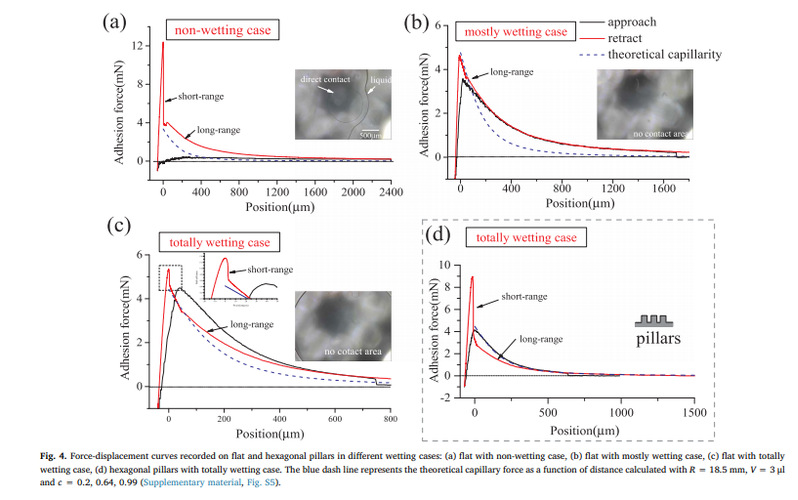| Effect of wetting case and softness on adhesion of bioinspired micropatterned surfaces |
| M. Li, J. Xie, Q. Dai, W. Huang, X. Wang,Journal of the Mechanical Behavior of Biomedical Materials,78,266-272,(2018) |
| 发布人:戴庆文 发布时间:2020-12-05 浏览次数:394 |
Inspired by the adhesive ability of amphibian toe-pads, polydimethylsiloxane (PDMS) hexagonal pillar arrayed surfaces with varying softness are fabricated, and their adhesion behaviors in the non-wetting, mostly wetting and totally wetting cases are throughly investigated. Experimental results demonstrate that under a totally wetting case, i.e. the biological toe-pad-like case, besides the long-range capillary force, a short-range interaction caused by close contact plays a significant role for adhesion. Compared with unpatterned surface, hexagonal pillar patterns can lead to a remarkable improvement in both short- and long-range contribution for wet adhesion. Meanwhile, the surface softness performs a beneficial character in the short-range contribution for the adhesion of micropillars. Considering the fact that the soft microstructure and the almost totally wetting case (low surface tension of secretion and high surface energy of epidermis) on the pads of nature species, it is reasonable to suggest that these evolutions are in favor for wet attachments.
全文下载: |
